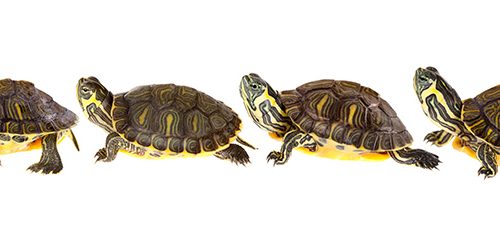
Asp harlequin
ASPID HARLEKIN (Micrurus fulvius), one of the largest snakes of its kind, reaching almost 1 m in length, is distributed to the north farthest from all the aspids of America. This snake represents a certain danger, since, with its considerable size, it can easily bite a person. When bitten, the asp clings tightly with its teeth and strongly compresses the jaws. The percentage of deaths from the bites of the harlequin asp is quite high. If you do not take the necessary measures, then the person usually dies 20-24 hours after the bite. Asp venom mainly affects the nervous system (paralysis, collapse), there is no tumor, but a sharp pain occurs in the bite area.
Classification
Kingdom: Animalia (animals)
Type: Chordata
Class: Reptilia (reptiles)
Order: Squamata (scaly)
Suborder: Serpentes (snakes)
Family: Elipidae (aspididae)
Species: Micrurus fulvius (harlequin asp)
Inhabitation
The habitat of the harlequin asp is located farthest from all representatives of the aspid to the north of America and northeast Mexico.
Description
Harlequin aspid is one of the largest representatives of the entire genus of aspid. Its length reaches 100 cm. Most of the time it spends in shelters – hiding in fallen leaves or digging into the ground.
The head of this snake is small and has a blunt shape. The body ends in a short tail. She has a small and rather weakly stretching mouth with relatively small poisonous teeth.
The color of the harlequin asp is quite aggressive – it is made up of wide black and red rings, which are separated from each other by narrow yellow rings.
This species is extremely dangerous, since, having a sufficiently large size, it can easily bite a person. Another feature of the harlequin asp is the ability to firmly cling to the victim with its teeth during a bite, while clenching its jaws strongly so that the poison acts on the victim as quickly as possible. The teeth of asps are still primitive, since they are motionless in the oral cavity. Local phenomena at the site of the bite are almost not observed. Only a sharp pain is felt at the site of the bite, but despite this, the variant of death after the bites of the harlequin asp is quite common. If you do not take the necessary measures after the bite, then death can occur in about 20-24 hours. The venom of this snake, with a pronounced effect of neurotoxins that cause collapse and paralysis
Food
In nature, the harlequin asp eats mainly small lizards, as well as insects.
Additionally
The harlequin asp is in the top 10 most venomous snakes on the planet.
There are several types of non-venomous snakes, such as the American snake, which perfectly imitate the appearance of the asp.
Sources of
http://www.floranimal.ru
http://zooterritoria.ru
http://ru.enc.tfode.com
http://ru.wikipedia.org
http://dic.academic.ru
Content in captivity
The harlequin asp is one of the most frequently kept in captivity representatives of the extensive (53 species) genus.





